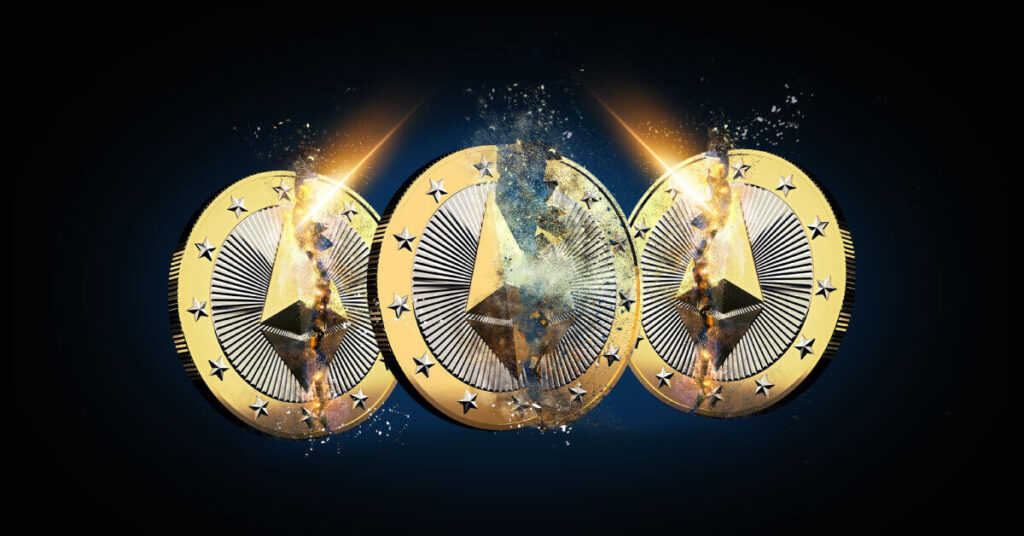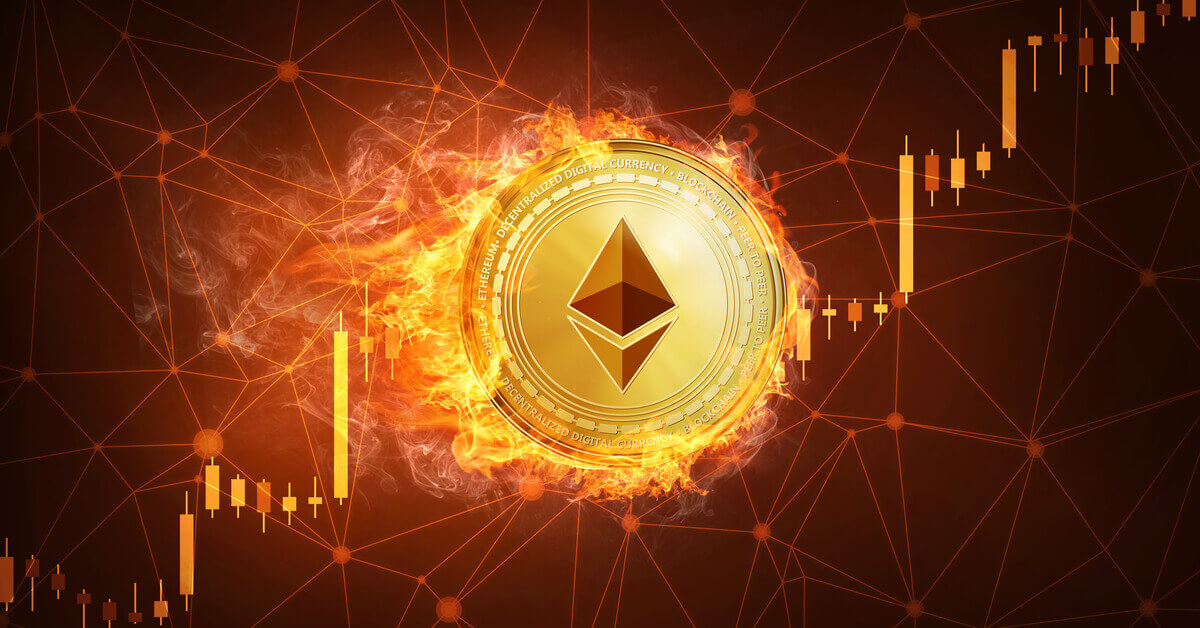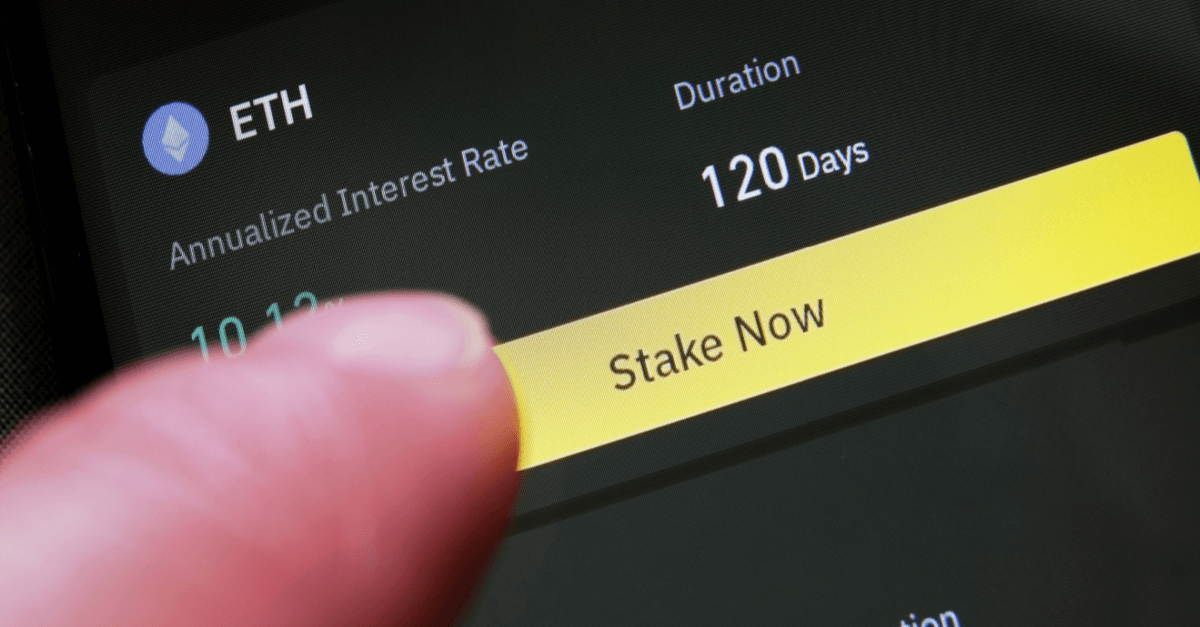
Ethereum’s Triple Halving Is Fast Approaching
Ethereum’s upcoming Merge will change crypto as we know it, taking the high mining fees Ethereum has become known for and passing them back to its users alongside a substantial reduction in supply.
The final date for the long-awaited Merge between Ethereum’s mainnet and Beacon Chain has been set for September 15th 2022, and crypto analysts have been evaluating how the upgrade will affect its supply and value.
The Merge is expected to compound the effect of previous upgrades to ignite a once-in-a-lifetime ‘triple halving’ event.
In this article, we’ll explain what a triple halving is, the three key forces behind it, and how they’ll affect Ethereum’s supply and value.
What is a triple halving?
The term ‘halving’ is a concept that was born from Bitcoin. Bitcoin operates under a proof-of-work consensus mechanism, whereby miners verify transactions on the network and are rewarded in BTC. This is how new Bitcoin is created and issued. However, Satoshi Nakamoto, the creator of the cryptocurrency, set up Bitcoin’s algorithm to reduce rewards by half approximately every four years, or every 210,000 blocks.
The concept of ‘halving’ started with Bitcoin, which historically enters a bull cycle after each halving event (Source: TradingView).
The objective behind this is to create deflationary pressure by ensuring that Bitcoin’s issuance rate reduces regularly, and therefore, the asset becomes scarcer over time.
It’s worth noting that as a result, these halving events are strongly correlated with Bitcoin’s bull cycles.
Although Ethereum also currently operates under proof-of-work, it wasn’t created to algorithmically reduce its issuance rate. Instead, Ethereum’s developers have adjusted its issuance rate manually, alongside other features, through various software upgrades over the years.
There are three key factors which combined, are expected to cause a “triple halving”, projected to reduce Ethereum’s annual issuance rate from 4.3% to 0.4% – a 10x reduction.
The three factors are:
- The Merge
- Ethereum’s token burning mechanism (EIP-1559)
- Staking
The Merge
Ethereum’s developers have historically manually reduced its miner reward through software upgrades:
- 2013: the block reward was 5 ETH
- 2017: the reward was reduced to 3 ETH following the Constantinople hard fork
- 2019: the reward was reduced to 2 ETH following the Byzantium hard fork
Under Ethereum’s current proof-of-work mechanism, approximately 6,300 new blocks are mined each day, equaling roughly 12,600 new ETH issued daily.
Based on today’s price (correct as of 18th August 2022), that totals $24,081,070 in ETH paid to miners daily as rewards. It’s estimated that Ethereum’s supply increases by about 4.3% per year.
Ethereum’s network issues block rewards to miners who help to secure the network (Source: Etherscan).
Mining rewards are high because developers want to incentivise miners. Mining crypto is an expensive undertaking due to the electricity required to run the specialist computers. High issuance rates encourage miners to compete for block rewards. In turn, more miners mean a more secure network.
The Merge will transition Ethereum from proof-of-work to proof-of-stake, which will turn Ethereum from a miner-secured network to a validator-secured network. Validators will be required to authorize transactions and secure the network, just as miners do.
However, the staking model requires drastically less energy than mining, roughly 99.95% less to be precise. As a result, the network will be able to issue smaller block rewards.
A lower issuance rate will reduce Ethereum’s daily sell pressure as miners won’t have rewards they need to sell in order to cover their energy costs. Generally, when the selling pressure of an asset decreases, its price increases because it becomes scarcer.
Ethereum’s token burning mechanism (EIP-1559)
In August 2021, a software upgrade called EIP-1559 went live during the London hard fork. EIP-1559 introduced a burning mechanism, where a portion of Ethereum’s transaction fees are burnt.
Previously, all the fees were issued directly to miners. This upgrade has already reduced the amount of ETH that goes into circulation and at times made Ethereueum issuance deflationary, which will only be compounded by the Merge.
Staking
Although Ethereum hasn’t officially moved over to a staking model yet, staking was first introduced to the network on the Beacon Chain in 2020. Staking is the process of giving a cryptocurrency to validators to help them secure the network.
In exchange for storing your crypto away, you receive staking rewards, much like miners do for verifying transactions.
The annual percentage yield for staking ETH is currently roughly 4% and DeFi tools such as Lido now allow anyone to stake their Ethereum and earn yield.
At the time of writing, $25,166,142,206 worth of ETH is staked, equating to 10.86% of the total supply. What makes this so significant is the staked ETH is ‘locked’, meaning that you can’t currently withdraw it.
A staggered software update enabling withdrawals is expected to be deployed 6-12 months post-Merge. Since a large proportion of Ethereum’s total supply is locked away, its circulating supply has been further reduced, and its scarcity has increased even more.
Will a triple halving increase Ethereum’s price?
As always, nothing is ever certain in the world of DeFi. There’s never a guarantee of high returns when you’re making an investment. However, it’s clear that the trifecta of the Merge, EIP-1559, and staked Eth being locked away, will drastically reduce Ethereum’s issuance and circulating supply.
Typically, scarce assets are more valuable, which is one of the reasons why Bitcoin is valued so highly.
The full impact of the triple halving won’t be seen till some time after the merge when markets have cooled off, but now might prove to be a great time to stock up.
As always, ensure that you do your own research before purchasing any crypto, no matter how promising the returns may seem.
If you’re thinking of purchasing Ethereum, so you can start staking and earning rewards, you can do so with Xcoins. We offer 0% processing fees on your first purchase as well as no verification when you buy up to $150 worth of crypto. Sign up now to benefit from buying crypto instantly and securely.
To stay up to date on all things crypto, like Xcoins on Facebook, follow us on Twitter, Instagram, LinkedIn, and sign up at the bottom of the page to subscribe.



